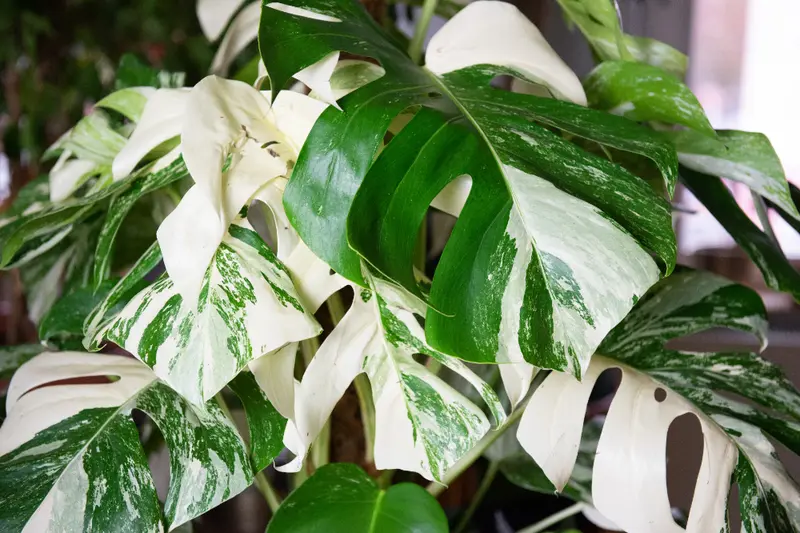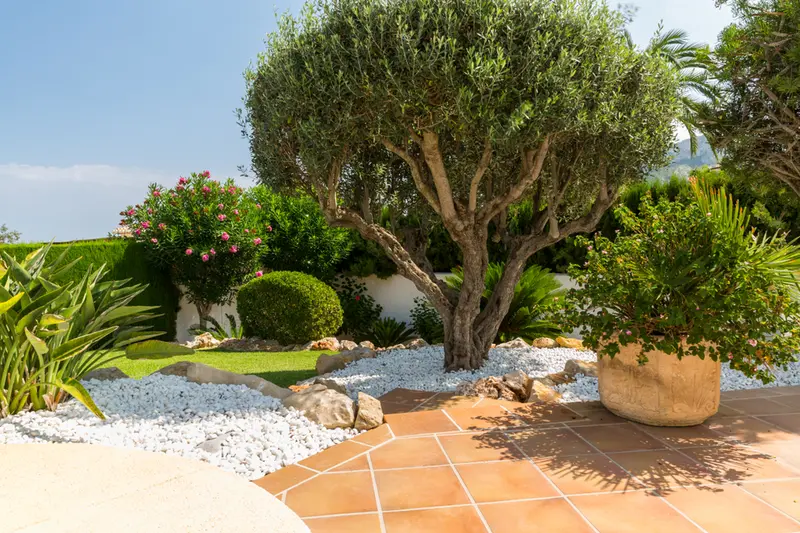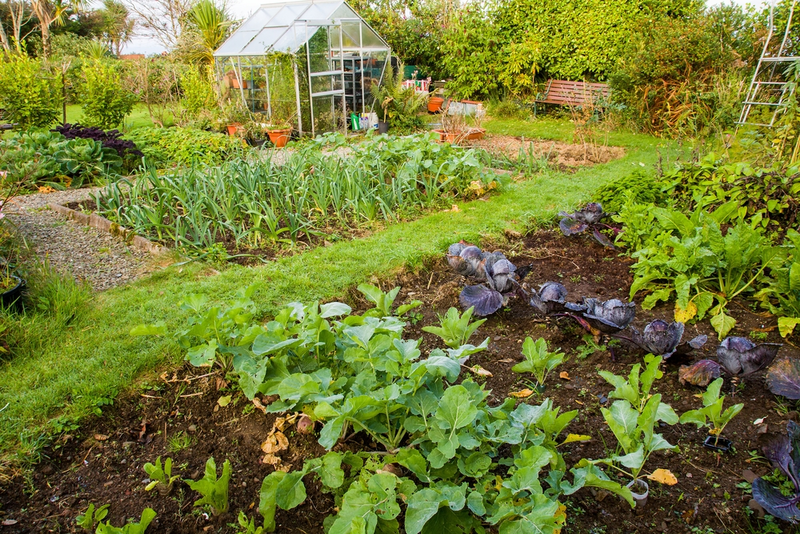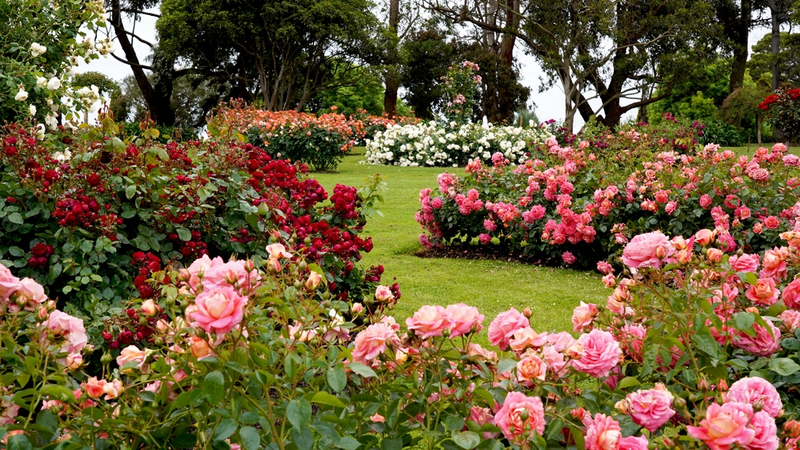With their tall canes and evergreen leaves rustling in the wind, bamboos add a touch of exotic elegance to a garden and make beautiful screening plants. However, they do have a reputation for spreading! To allow you to enjoy your bamboo without worry, it’s important to choose the right bamboo and to know how to control it.

Explaining running and clumping bamboo
Bamboo is divided into two types: running and clumping. As the name suggests, clumping bamboo grows in clumps which gradually increase in size but tend not to spread invasively. Running bamboo spreads by putting out rhizomes (underground stems) which pop up at some distance from the original plant and grow into new plants. In this way, running bamboo spreads quickly and can become invasive if not controlled.
How to control running bamboo
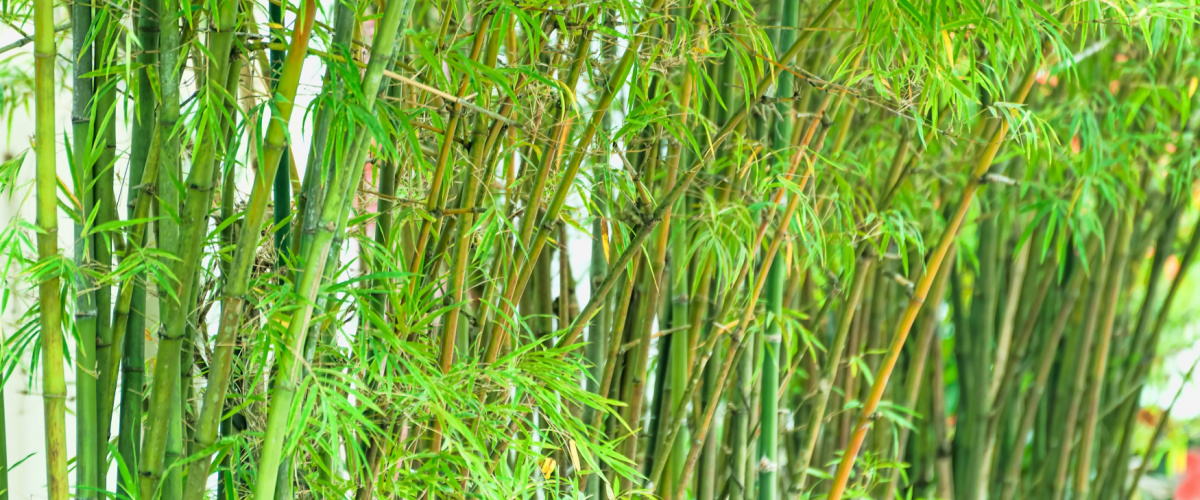
When planting running bamboo, dig a trench at least 60cm (2ft) deep and preferably 1.2m (4ft) deep around the root ball and line this with a root barrier fabric – use one specifically designed for bamboo, as standard weed-suppressant fabric is not strong enough. Overlap the ends of the fabric by at least 50cm, and seal with tape to make sure there are no gaps where roots can creep through. The barrier should protrude 7.5cm (3in) above the ground so that bamboo runners can’t spread over the top.
In addition, it’s a good idea to root-prune running bamboo at least once a year – this also lets you spot any escapee shoots early! Use the sharp edge of a garden spade, driving it into the ground around the root ball of the bamboo and cutting through any rhizomes that are starting to spread. Dig out the rhizomes, leaving a small amount attached to the plant so that it can put up new shoots. If you find any shoots beyond the root barrier, dig them up and seal the hole in the barrier.
Popular running and clumping bamboo
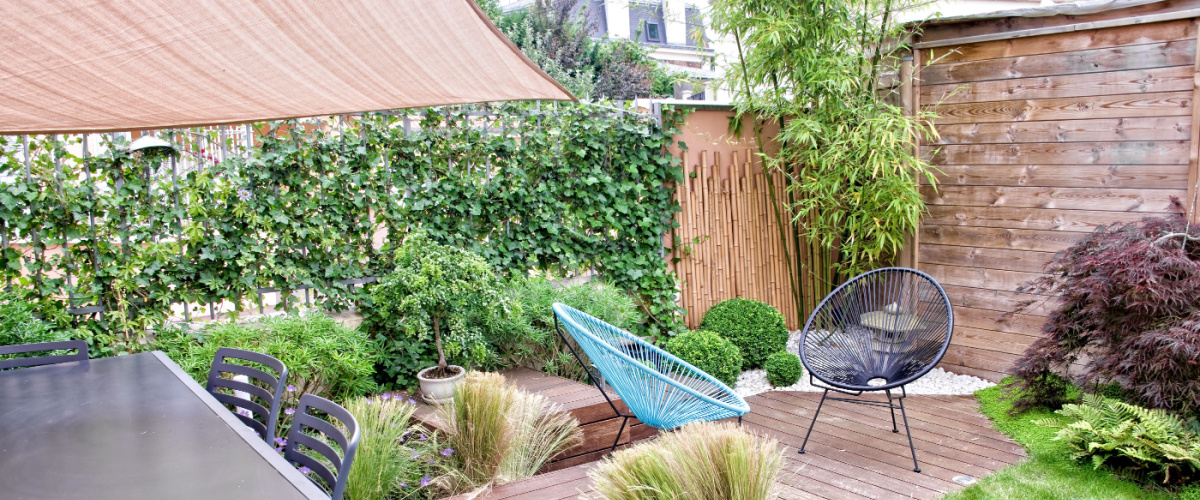
There’s a wide range of beautiful bamboos available, and here are a few of the most popular. Before buying any bamboo, always check whether it’s a running or clumping type.
- Phyllostachys nigra – a fast-growing running bamboo with dramatic dark purple-black stems. It’s a fantastic architectural plant but, like all Phyllostachys bamboo, should always be planted inside a root barrier.
- Pseudosasa japonica – a tall, vigorous running bamboo with beige canes, more tolerant of shade and wind than most bamboos. It spreads rapidly if not controlled.
- Sasa veitchii – a compact running bamboo with glossy green leaves that dry at the edges, turning straw-brown and giving the foliage a variegated effect. Plant in a root barrier to control its spread.
- Fargesia rufa – a medium-sized clumping bamboo with slender arching canes. It’s good for smaller gardens and can be grown in a large pot.
- Fargesia murielae – a fast-growing, medium-sized clumping bamboo with arching yellow-green canes. It can be grown in a large container.
For advice on growing bamboo and other screening plants, visit our centre. Our staff are always happy to help!

